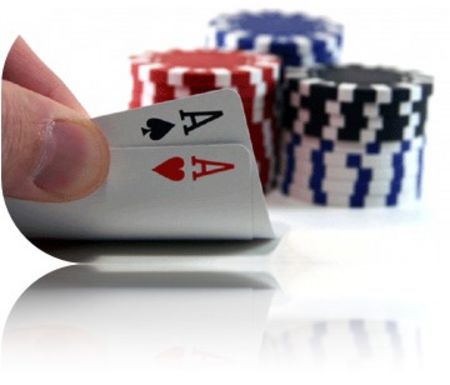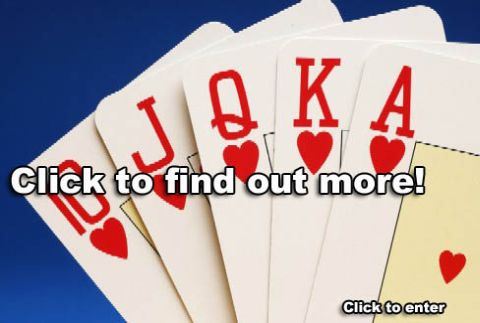Calling Raises

Calling raises too often on the turn is another common mistake made by many
players. One problem with calling raises on the turn is that you often end up calling
the river. Since your goal is to win a big bet an hour, making the mistake of calling
the turn and river when you shouldn't would wipe out two hours of earnings. When
calling a raise on the turn, think shout whether or not you will call the river if you
don't improve. Paying two big bets significantly decreases the pot odds you are
receiving to see if you will win the hand.
Many opponents wait until the turn to raise their really strong hands, A lot of players
are also reluctant to make semi-bluff raises on the turn, especially at the lower
limits. For these reasons, you need to be very careful about when you call raises on
the turn. Most opponents who raise the turn almost always have at least top pair
with a good kicker, and they often have two pair or better; therefore, you should
often fold pairs when raised on the turn. The main exception to this is in tight
aggressive games where some opponents will raise the turn on a semi-bluff,
especially in heads-up situations, so you sometimes need to call with a mediocre
holding such as a pair depending on the circumstances.
Let's look first at a couple of situations where folding to a raise is quite
straightforward. Many opponents are very predictable on the turn and you can use
this to your advantage to make correct decisions. For example, some opponents
will never raise or check-raise on the turn as a bluff or semi-bluff. If this type of
player raises, you can safely fold unless you have a very strong hand.
Another situation where you can safely fold marginal hands is when an opponent
raises after two players have already called the turn. It is very rare for a player to
raise two players on the turn without a very strong hand. For example, if you bet
out, are called by one opponent, and then raised by another, you should generally
fold unless you have a very strong hand or are getting good odds on a draw.
Advanced Concept: There are two situations when folding to raises on the turn with a mediocre
holding such as a top pair is relatively straightforward:
1. Your opponent is the type who never raises the turn on a bluff or semi-bluff.
2. An opponent has raised after two players have already called the turn.
In these two situations, I would need at least top pair with top kicker to call, and
often an even better hand depending on the type of opponents I am against.
Unfortunately, in tight aggressive games, turn play is not this straightforward most
of the time. You will find yourself in a lot of heads-up situations where it is difficult to
get a good read on your opponent's hand. In heads-up situations, some players will
raise the turn with many types of hands such as top pair, middle or bottom pair,
flush and straight draws, and of course two pair or better. When these types of players raise, sometimes you should fold top pair
with top kicker, while other times you might be reraising. You might even need to
call with bottom pair and possibly even ace high in some situations. Calling in these
types of situations often depends on the type of board and how your particular
opponent might play that board.
Let's look at a common example. You raise in early position with AK and a middle
position player calls. The flop is all rags such as 642. You bet and are called. The
turn is another rag such as a 4. You bet and your opponent raises. What do you
do? Against most opponents you should almost always fold; however, you
sometimes need to call in some of the tight aggressive high-limit games where
some opponents will raise with Ax. Realize however that most players will not raise
in this situation as a semi-bluff. The type of opponent you are playing often has an
impact on these types of borderline decisions.
Always evaluate the type of board to guide your decision. If the board is three-
suited such as A ♦ T ♦ 5 ♣ 2 ♠, consider what types of hands your opponent could be
holding. For example, a raise on the turn with this board could mean your opponent
hit a flush, or it could mean he holds the K ♦ or Q ♦ and is raising on a semi-bluff, or
maybe he has Ax and is protecting his hand against an opponent with a draw. Note
how the number of players in the hand makes a difference on the possible holdings.
If two players have called a turn bet and an opponent raises, you can generally
assume that he is not raising on a flush draw. However, in a heads-up situation
some aggressive players might raise with K ♦ T ♣ hoping that you might fold a hand
such as KK, QQ, or JJ.
Also note how high the board cards are. It is less likely for opponents to make
draws on a flop like A ♣ 9 ♦ 5 ♥ than they are with a flop of T ♣ 5 ♦ 2 ♥. If your opponent
waits to raise the turn with an A ♣ 9 ♦ 5 ♥ 3 ♠ board, you should ask yourself. "What
kind of hand would my opponent call the flop with and then raise the turn?" You
should be concerned about a set, two pair, or a pair of aces with a good kicker.
Against most opponents in this heads-up situation, you could safely throw away KK,
AJ, and maybe even AQ. Against tight rocks who wouldn't raise with two pair or
less, you could even throw away AK, as it is likely that your opponent has a set.
On the other hand, what if your opponent raises the turn with a T ♣ 5 ♦ 2 ♥ 8 ♦ board?
Since the cards are relatively low, it is more difficult to determine your opponent's
strength. He could be raising with a set, a pair of tens, or maybe even a hand such
as 77 hoping that you are holding a hand like AK. A tricky opponent might even
raise with a hand like QJ or a diamond draw. With this type of board against certain
opponents, you should be more likely to call with an overpair or top pair.
One final situation to discuss is when you need to call a raise cold, forcing you to
pay two big bets to sec the river. In almost all cases, one of your opponents has a
very strong hand, unless he is trying to protect a vulnerable medium holding. The
other problem with calling in this situation is that the original bettor could reraise, To
call a raise cold, you almost always need a very strong hand or draw. For draws,
the pot will need to be quite large to justify calling a raise cold.
For example, if you have the nut-flush draw on the turn, you are 4 to 1 against
improving. In a $10-$20 game, you will need at least $160 in the pot to justify
calling a raise to $40. In reality, you probably need more in the pot to call, as one of
your opponents could have a set reducing your outs to seven, which is 6 to 1
against improving. This is an even bigger problem if the original bettor has the set.
as he will likely reraise.
NEXT...Review

